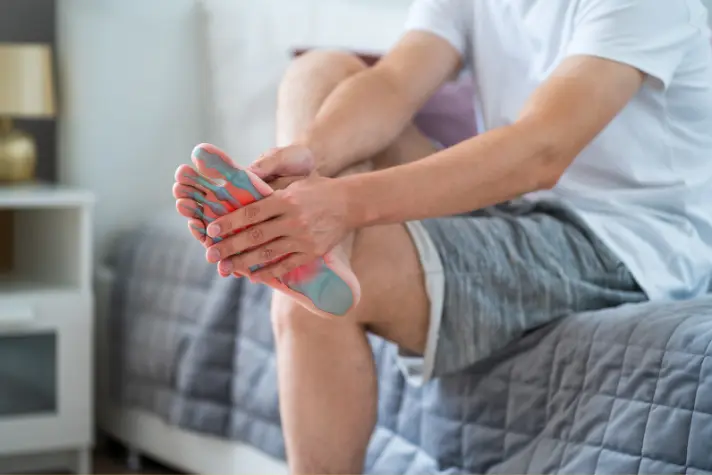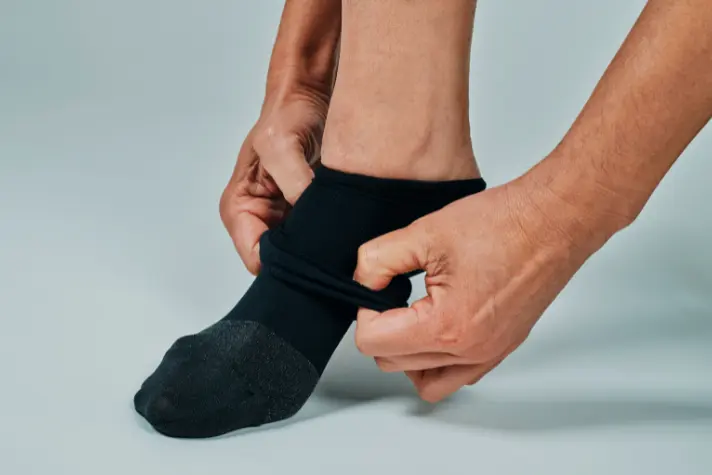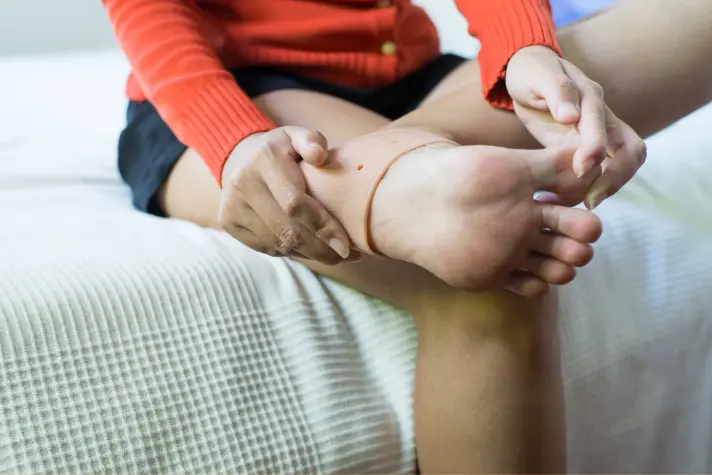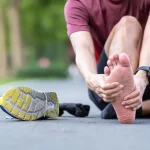 Plantar fasciitis is a common and painful condition that affects the feet, particularly the heel area. It can make walking and daily activities challenging, but the good news is that there are effective non-surgical methods for treating this condition. One such approach gaining popularity is the use of compression socks for plantar fasciitis.
Plantar fasciitis is a common and painful condition that affects the feet, particularly the heel area. It can make walking and daily activities challenging, but the good news is that there are effective non-surgical methods for treating this condition. One such approach gaining popularity is the use of compression socks for plantar fasciitis.
In this article, we’ll explore holistic methods for treating plantar fasciitis, delve into the benefits of compression socks in managing this discomforting condition, and discuss lifestyle modifications and self-care practices that can complement these treatments.
Understanding Plantar Fasciitis
Before we discuss holistic approaches, let’s briefly understand what plantar fasciitis is. The plantar fascia is a thick band of tissue that runs along the bottom of your foot, connecting the heel bone to the toes. When this tissue becomes inflamed or irritated, it can lead to plantar fasciitis. Common symptoms include sharp heel pain, especially during the first steps in the morning or after prolonged periods of sitting.
Holistic Approaches to Treating Plantar Fasciitis
- Stretching Exercises: One of the fundamental holistic methods for alleviating plantar fasciitis is incorporating specific stretching exercises into your daily routine. Stretching the Achilles tendon and calf muscles can help reduce tension in the plantar fascia. Gentle, consistent stretches can gradually improve flexibility and decrease pain.
- Proper Footwear: Wearing supportive shoes with adequate arch support is crucial when dealing with plantar fasciitis. Avoid flat shoes and opt for those designed to reduce strain on your arches. Orthotic insoles can also provide additional support and comfort.
- Cold Compression Therapy: Applying cold compression to the affected area can help reduce inflammation and relieve pain. This can be done using ice packs or specialized cold compression sleeves designed for the feet.
- Massage and Self-Massage: Regular foot massages or self-massage techniques can provide relief by increasing blood flow and loosening tight muscles. Consider using a massage ball or a foam roller to target specific areas of tension.
- Weight Management: Excess weight can exacerbate the symptoms of plantar fasciitis. Maintaining a healthy weight through diet and exercise can help reduce the pressure on your feet and improve your overall well-being.
The Role of Compression Socks for Plantar Fasciitis
 Among the holistic methods for treating plantar fasciitis, the use of compression socks has gained significant attention. Compression socks are specially designed to provide consistent pressure to the feet, ankles, and calves.
Among the holistic methods for treating plantar fasciitis, the use of compression socks has gained significant attention. Compression socks are specially designed to provide consistent pressure to the feet, ankles, and calves.
Here’s how they can be beneficial:
- Improved Blood Circulation: Compression socks can enhance blood circulation in the feet, which aids in reducing inflammation and promoting healing in the affected area.
- Reduced Swelling: By preventing the accumulation of excess fluid in the foot, compression socks can help minimize swelling and discomfort.
- Arch Support: Many compression socks are designed with arch support to alleviate strain on the plantar fascia, providing relief from pain.
- Wear Anytime, Anywhere: Compression socks can be worn discreetly under your regular socks and shoes, making them a convenient option for all-day relief.
- Graduated Compression: These socks are engineered with graduated pressure, meaning they are tighter at the ankle and gradually become less constrictive as they move up the leg. This design aids in the proper circulation of blood.
When considering compression socks for plantar fasciitis, it’s essential to consult with a healthcare professional or podiatrist. They can recommend the appropriate level of compression and the best brands for your specific needs.
Lifestyle Modifications and Self-Care Practices
 In addition to the holistic methods mentioned earlier, making specific lifestyle modifications and incorporating self-care practices into your daily routine can play a significant role in treating plantar fasciitis.
In addition to the holistic methods mentioned earlier, making specific lifestyle modifications and incorporating self-care practices into your daily routine can play a significant role in treating plantar fasciitis.
- Rest and Recovery: Adequate rest is crucial for the healing process. If you have an active lifestyle or a job that requires prolonged standing or walking, consider taking breaks to give your feet a chance to recover. Elevating your feet when resting can help reduce swelling and discomfort.
- Footwear Rotation: While supportive shoes are essential, it’s also beneficial to rotate your footwear. Having multiple pairs of well-fitting shoes can prevent excessive wear on one pair and distribute pressure more evenly on your feet.
- Foot Exercises: In addition to stretching exercises, performing strengthening exercises for the muscles in your feet can improve stability and reduce the risk of re-injury. Simple exercises like picking up marbles with your toes or scrunching a towel with your feet can be effective.
- Night Splints: Night splints are devices that keep your foot in a dorsiflexed position while you sleep. This helps maintain the plantar fascia in a stretched position, which can alleviate morning pain and stiffness.
- Anti-Inflammatory Diet: Some individuals find relief from plantar fasciitis symptoms by following an anti-inflammatory diet. This diet typically includes foods rich in antioxidants, omega-3 fatty acids, and anti-inflammatory spices like turmeric.
- Stress Reduction: Chronic stress can exacerbate inflammation and pain. Incorporating stress-reduction techniques such as meditation, yoga, or deep breathing exercises into your daily routine may have a positive impact on your overall well-being and help manage plantar fasciitis.
- Foot Hygiene: Proper foot hygiene is essential to prevent conditions like athlete’s foot, which can worsen plantar fasciitis symptoms. Keep your feet clean and dry, and consider using anti-fungal powders or creams if needed.
- Regular Check-Ups: It’s important to monitor your progress and consult with your healthcare provider or podiatrist regularly. They can make adjustments to your treatment plan as necessary and provide guidance on your specific condition.
By making these lifestyle modifications and embracing self-care practices, you can enhance the effectiveness of holistic treatments for plantar fasciitis.
Remember that consistency and patience are key when managing this condition, and tailoring your approach to your individual needs is essential for a successful outcome.
Conclusion
In conclusion, plantar fasciitis can be a challenging condition, but with a comprehensive approach that includes holistic methods, compression socks, and a few lifestyle modifications and self-care practices, you can significantly improve your quality of life and reduce discomfort.
Remember to always consult with a healthcare professional for personalized guidance on managing your plantar fasciitis effectively.
About The Author:
Pat Baker is a long-time chronic pain sufferer, a wearer of compression socks, and a writer for compression sock companies in the Philadelphia area.




